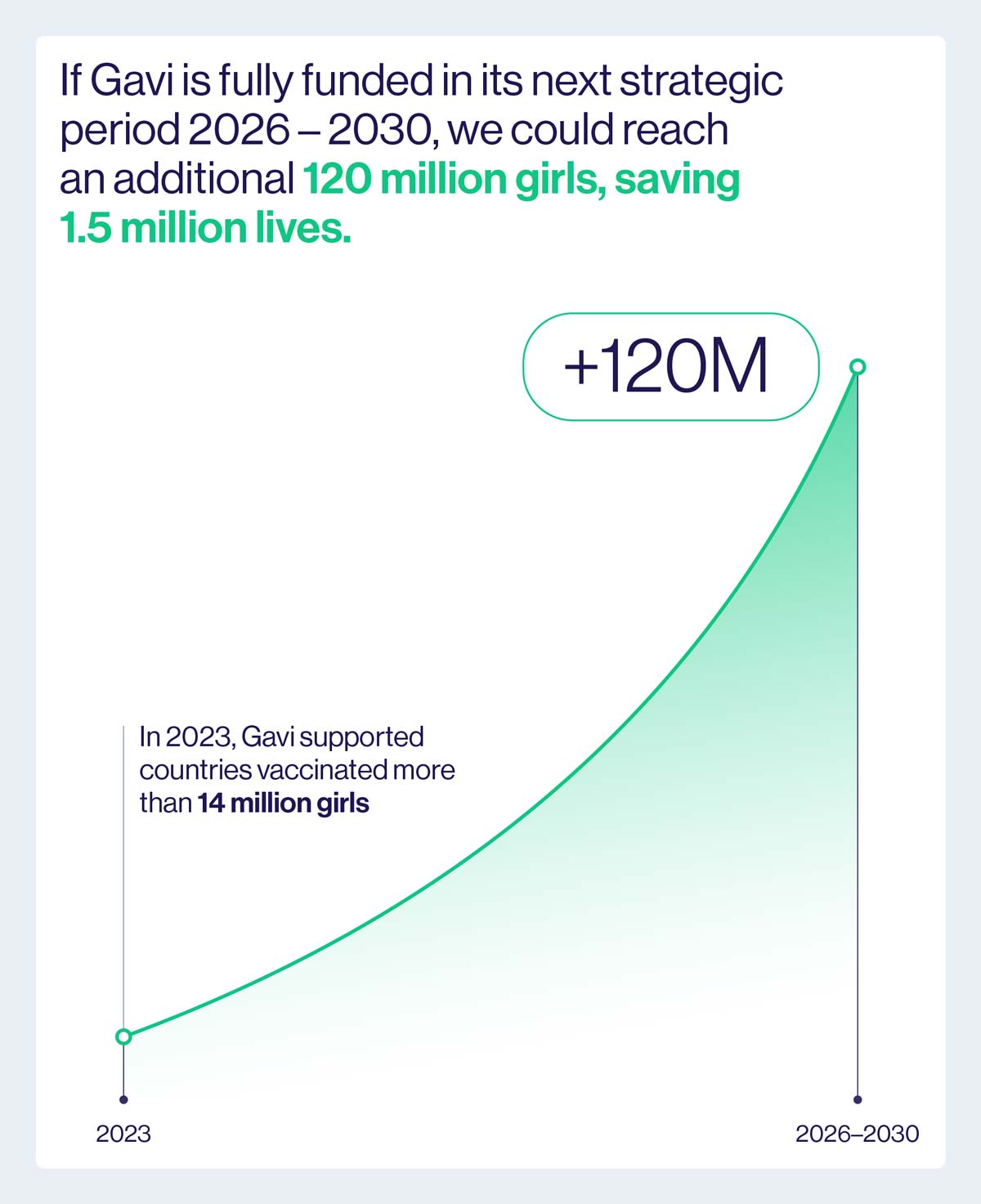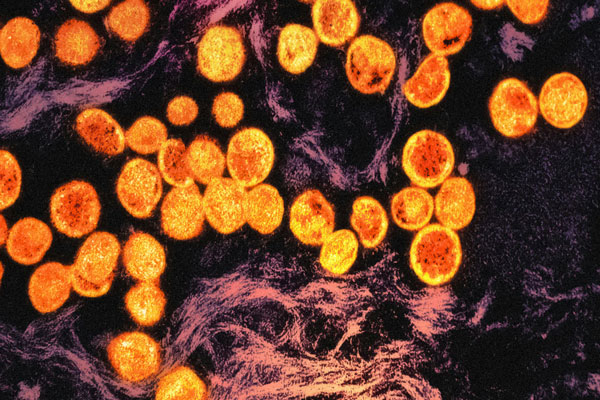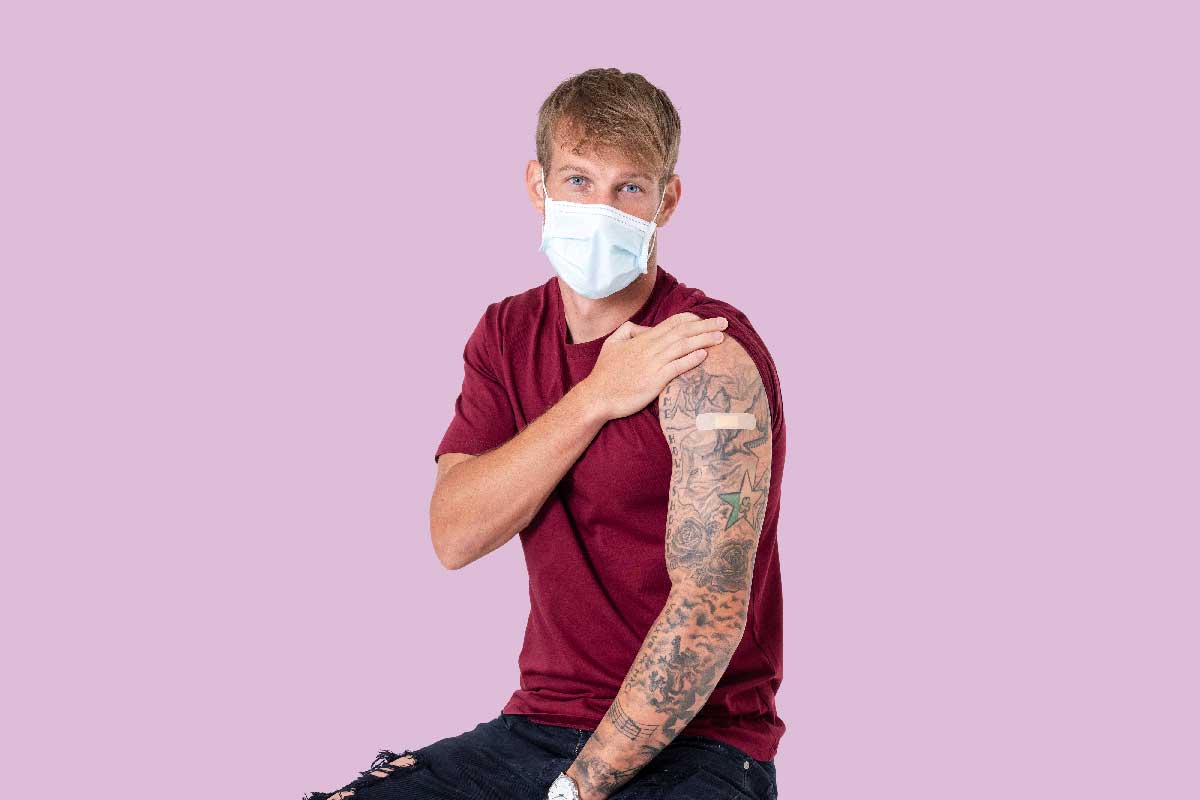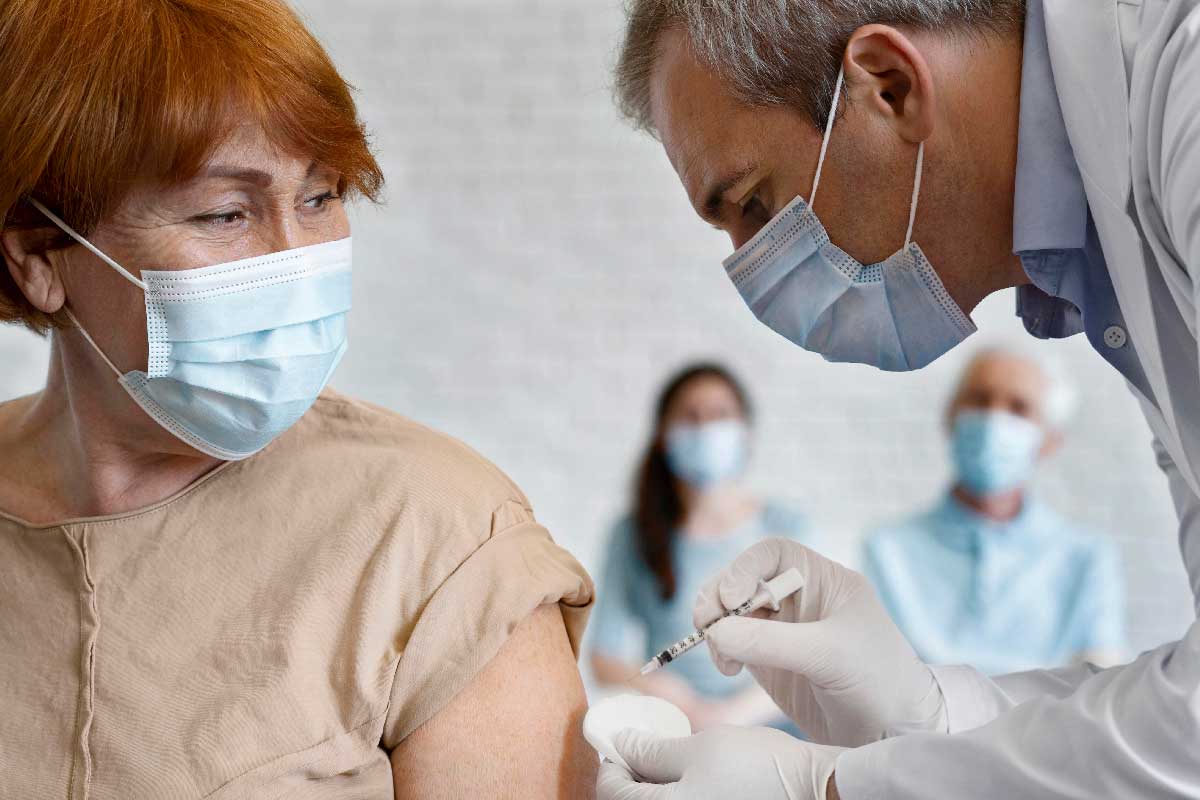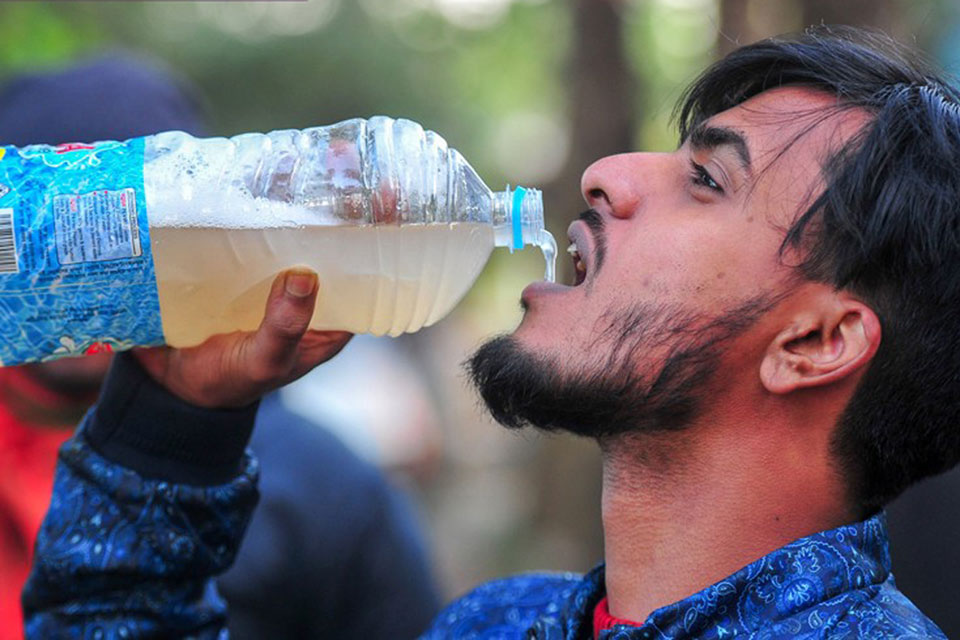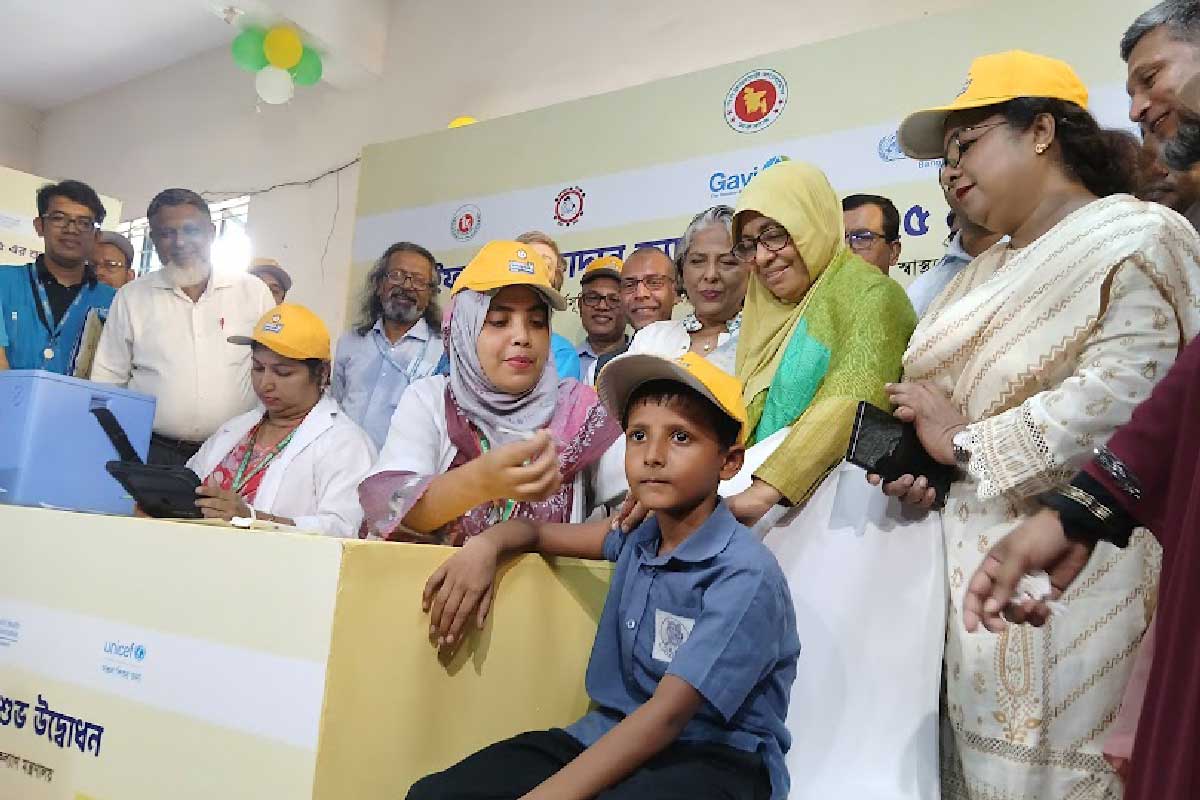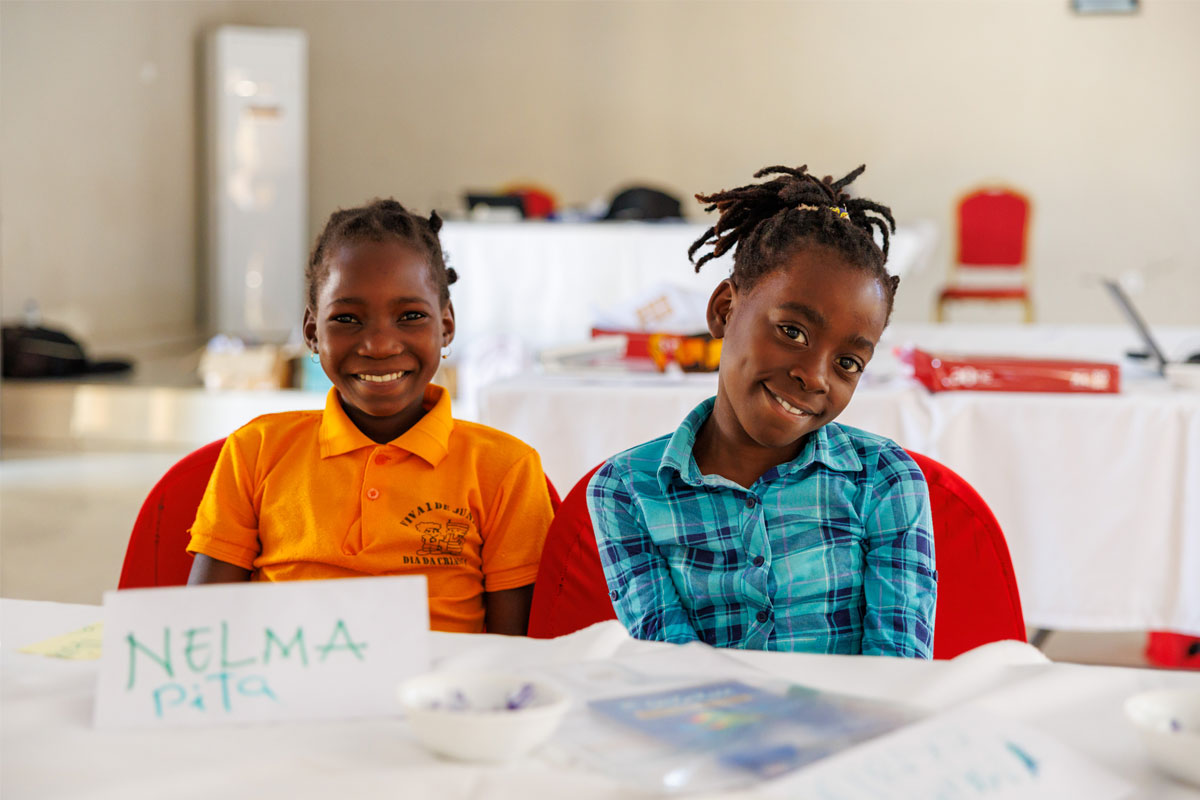Six ways the HPV vaccine is saving lives
The HPV vaccine is now reaching millions of girls around the world. Here’s why that matters.
- 20 June 2025
- 4 min read
- by Priya Joi
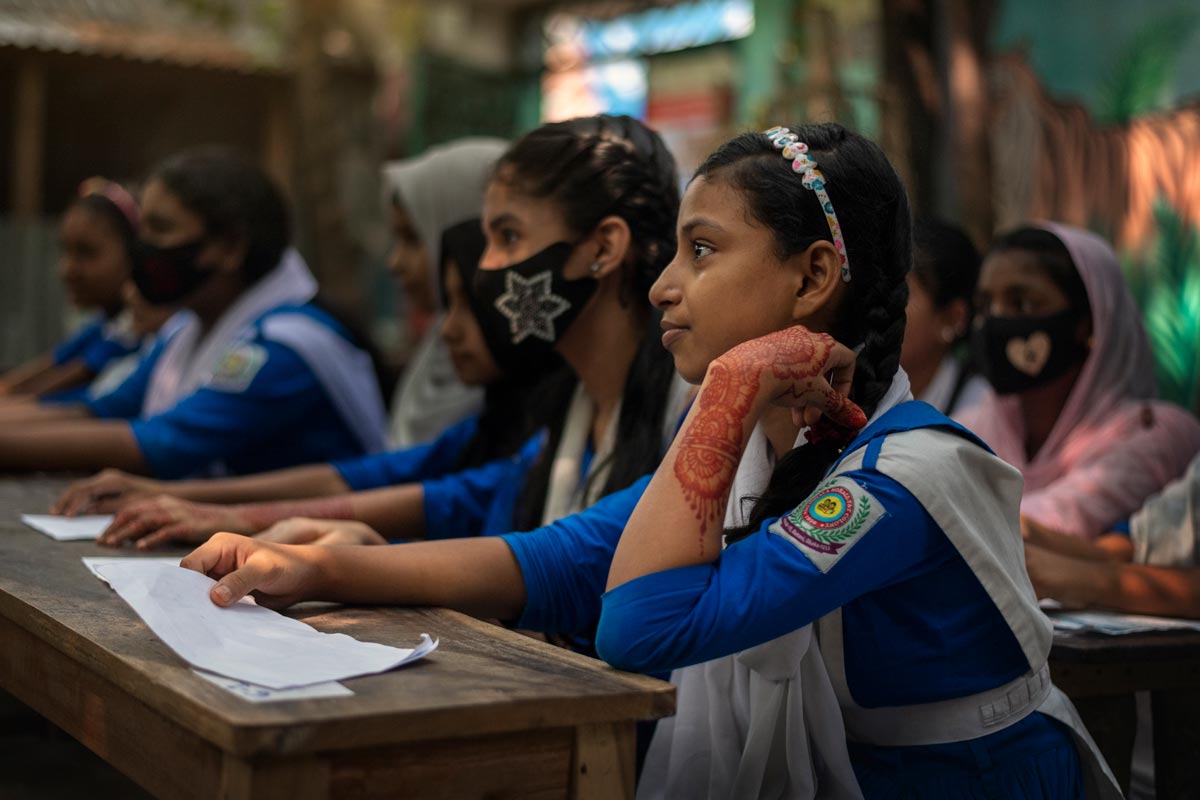
The human papillomavirus (HPV) vaccine is one of the most impactful tools in global health, and protects millions of women from cervical cancer.
Here are six ways this vaccine is helping build a better future for girls across the globe.
1. The HPV vaccine is highly effective against cervical cancer
For every 1,000 children vaccinated against HPV, an estimated 17.4 deaths are averted. The vaccine is most effective when administered as one or two doses to girls aged 9–14, the age group shown to gain the most protection.
The HPV vaccine can prevent up to 90% of all cervical cancer cases, offering a powerful shield against a disease that is the leading cause of cancer death in women in Africa. The vaccine is especially valuable as a preventive tool in low- and middle-income countries where access to screening and treatment is limited.
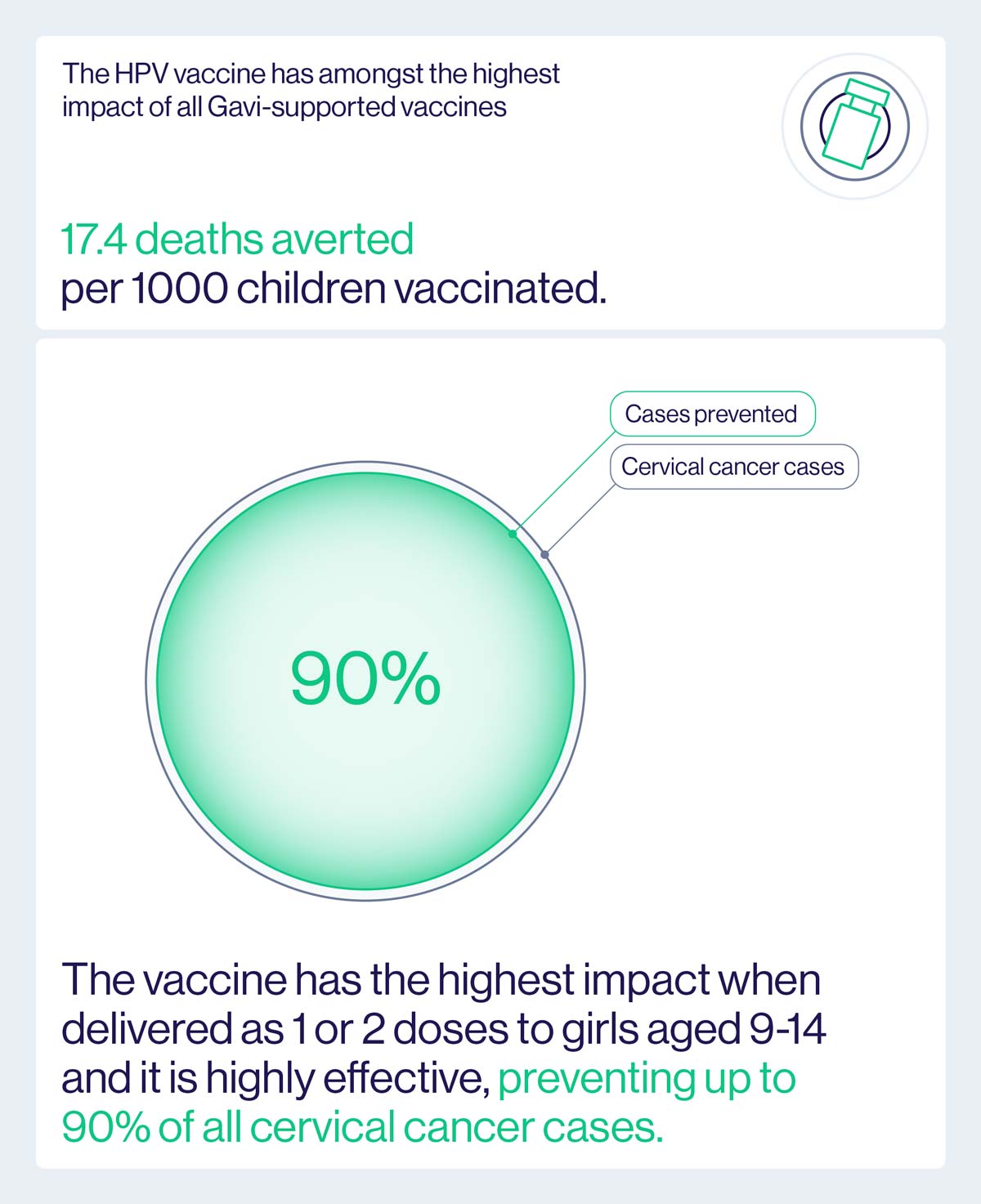
2. Gavi is working to protect 86 million girls with the HPV vaccine by the end of 2025
By 2023, Gavi had worked with over 40 countries to provide the HPV vaccine to 23.7 million girls. This massive immunisation effort is projected to avert over 605,000 future deaths from cervical cancer, a testament to the vaccine’s life-saving potential.
In 2023 alone, Gavi-supported countries vaccinated more than 14 million girls – more than the total number vaccinated in the previous decade combined. Thanks to an unprecedented scale-up of vaccine introductions, dedicated investment and expanded access since 2023, Gavi is on track to reach its ambitious goal of protecting 86 million girls with the HPV vaccine by 2025, a milestone that is expected to prevent more than 1.4 million future cervical cancer deaths.
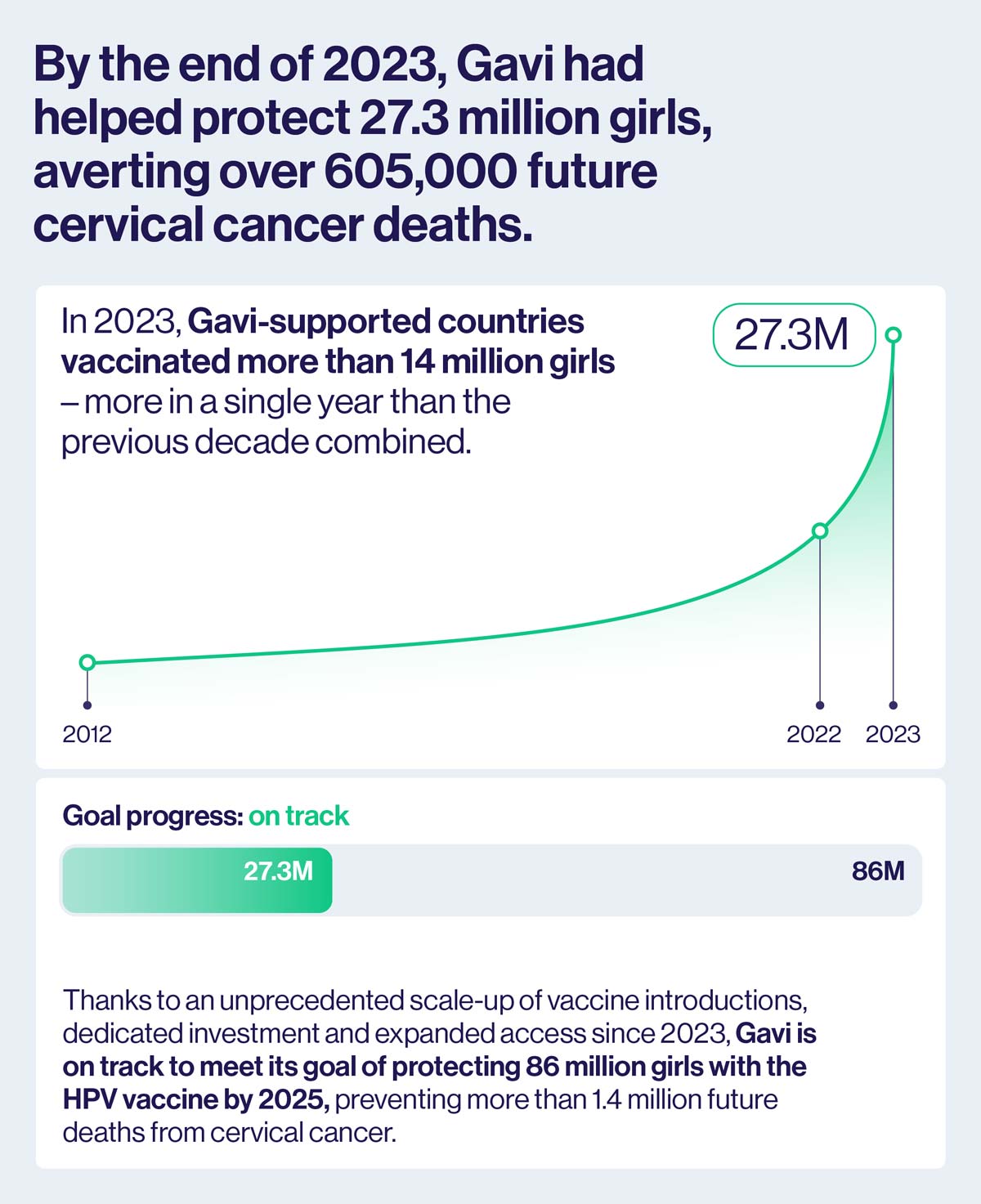
3. Africa is making great strides in rolling out the vaccine
In 2022, Africa accounted for 23% of global cervical cancer mortality, which could increase to 30% by 2030 if the current trend continues.
This is why it is so important that African countries are working with Gavi to improve HPV vaccine access. To date, 25 African countries have introduced the HPV vaccine with Gavi’s support, marking a major step forward in public health on the continent.
According to latest country estimates, Nigeria has reached 13.5 million girls between 2023 and 2025, Ethiopia vaccinated 7 million girls by the end of 2024, and Tanzania reached 5 million girls in a single campaign in April 2024. Côte d’Ivoire launched a campaign in April 2025, reaching 3 million girls in just one week. Tunisia became the first North African country to introduce the HPV vaccine with Gavi’s support in 2025, while Mali was the first in the Sahel by the end of 2024. These achievements highlight the vaccine’s transformative impact and the power of coordinated action.
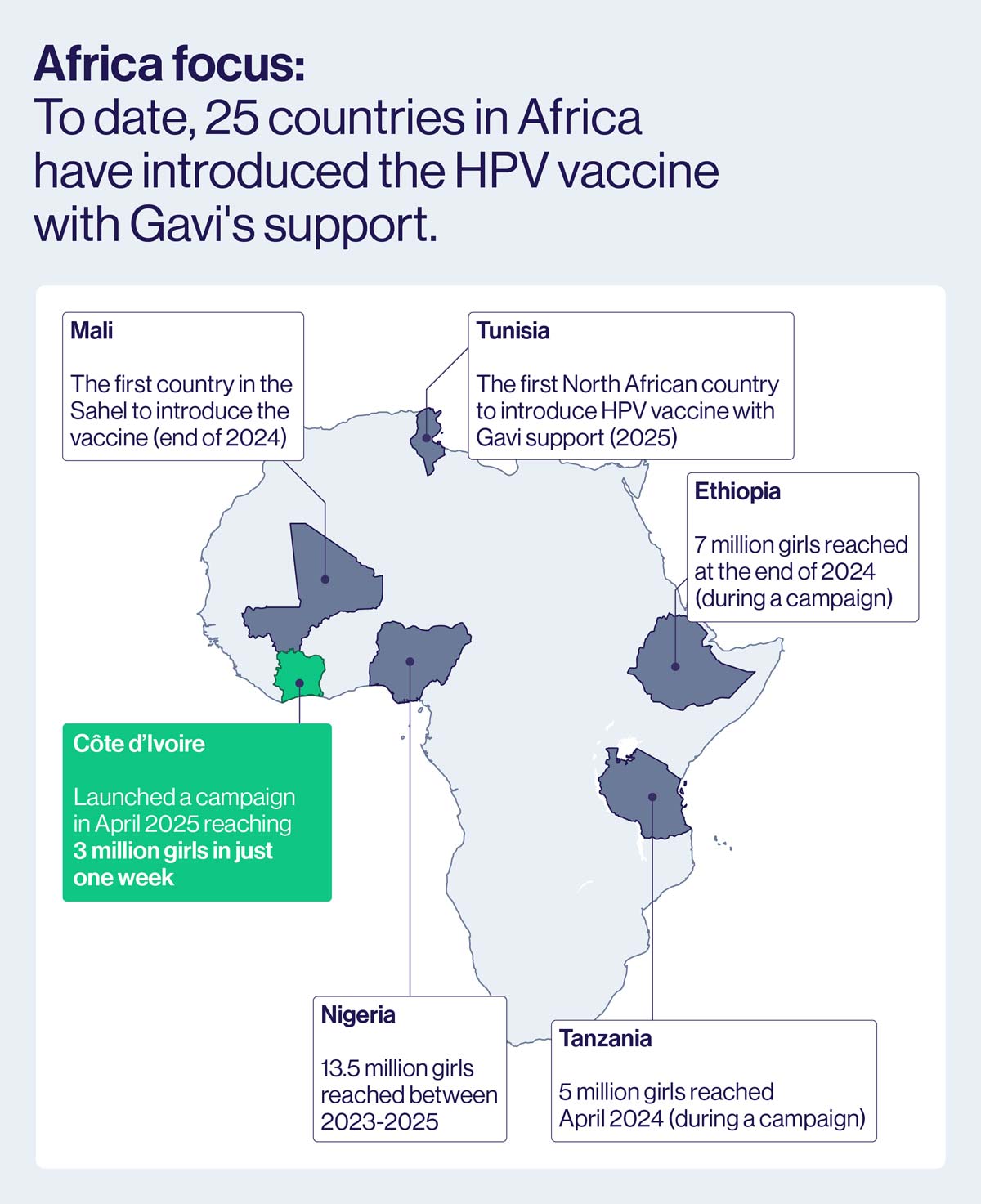
4. HPV vaccine coverage in Africa has risen has a result
National campaigns and Gavi’s support have driven a dramatic increase in HPV vaccine coverage across Africa.
According to the latest WHO/UNICEF Estimates of National Immunization Coverage (WUENIC), coverage for at least one dose of the HPV vaccine in the WHO African Region jumped to 40% in 2023, up from just 28% the previous year.
This rapid progress has propelled the WHO African region to rank second globally in HPV first-dose coverage, behind only the Americas. These gains reflect the effectiveness of international collaboration and local commitment to immunisation, and they underscore the growing momentum to eliminate cervical cancer as a public health threat in Africa.
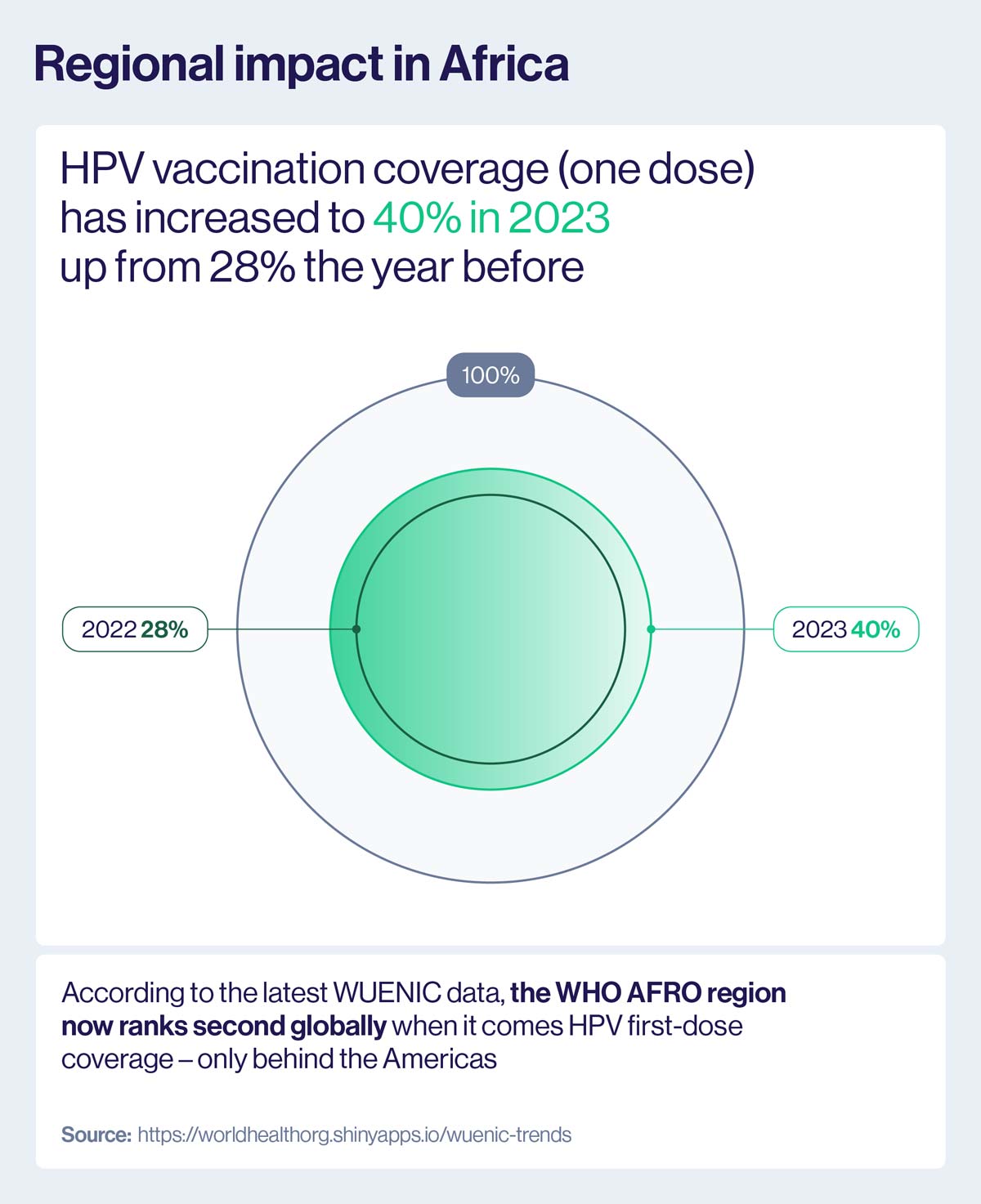
5. Gavi is supporting the integration of HPV vaccination with other health services
To further boost coverage and ensure sustainability, Gavi is supporting the integration of HPV vaccine delivery with other essential health services. These approaches include combining HPV vaccination with adolescent health services and cervical cancer screening and treatment.
Nine countries in the WHO African Region: Cameroon, Côte d’Ivoire, Ethiopia, Kenya, Malawi, Mozambique, Nigeria, Tanzania, and Zimbabwe, are currently piloting these integrated service models. By streamlining access and reducing missed opportunities for vaccination, these efforts aim to make HPV immunisation more accessible and equitable, especially for underserved populations.
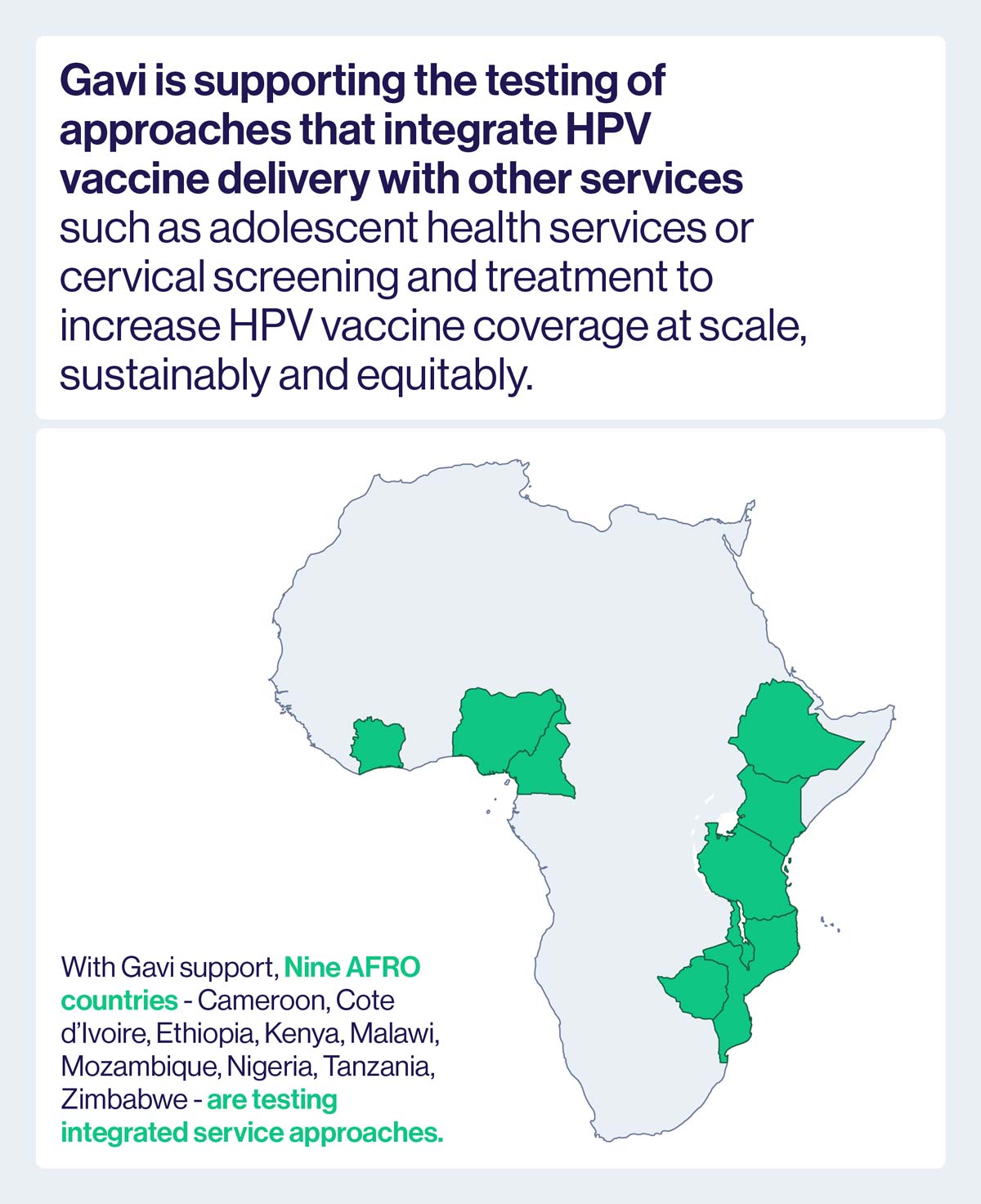
6. HPV vaccines have the potential to save even more lives
Looking ahead, the potential impact of the HPV vaccine is even greater. If Gavi is fully funded for its next strategic period (2026–2030), the Alliance could help reach an additional 120 million girls with the HPV vaccine, potentially saving another 1.5 million lives from cervical cancer.
Continued investment and international cooperation are essential to achieving these goals and ensuring that cervical cancer becomes a preventable disease for all girls everywhere.
